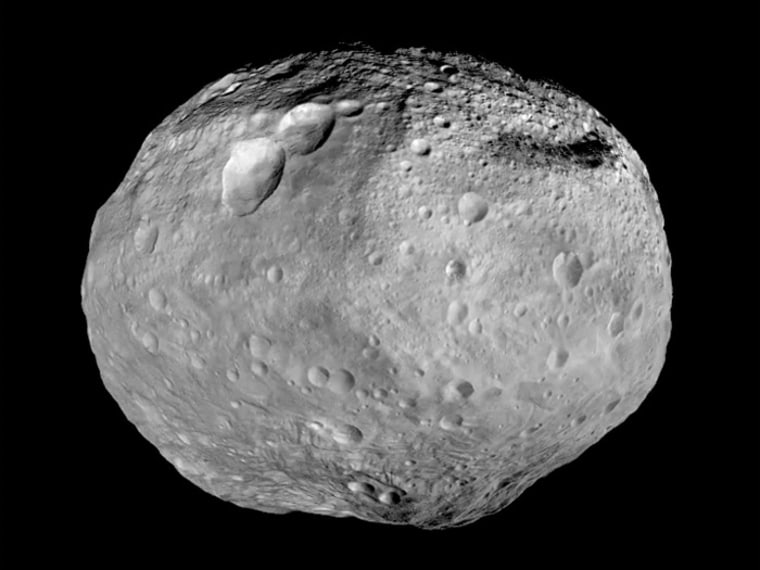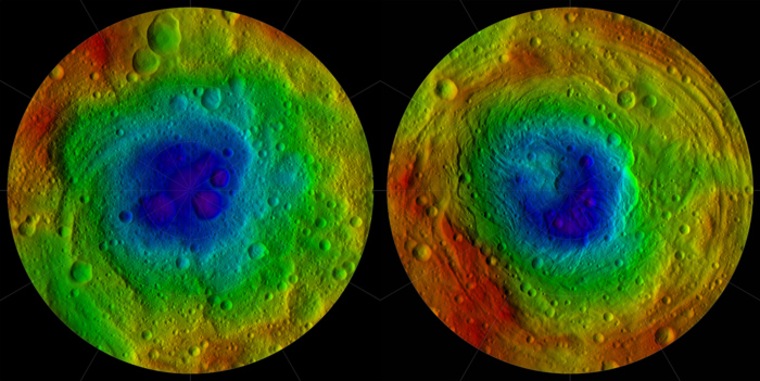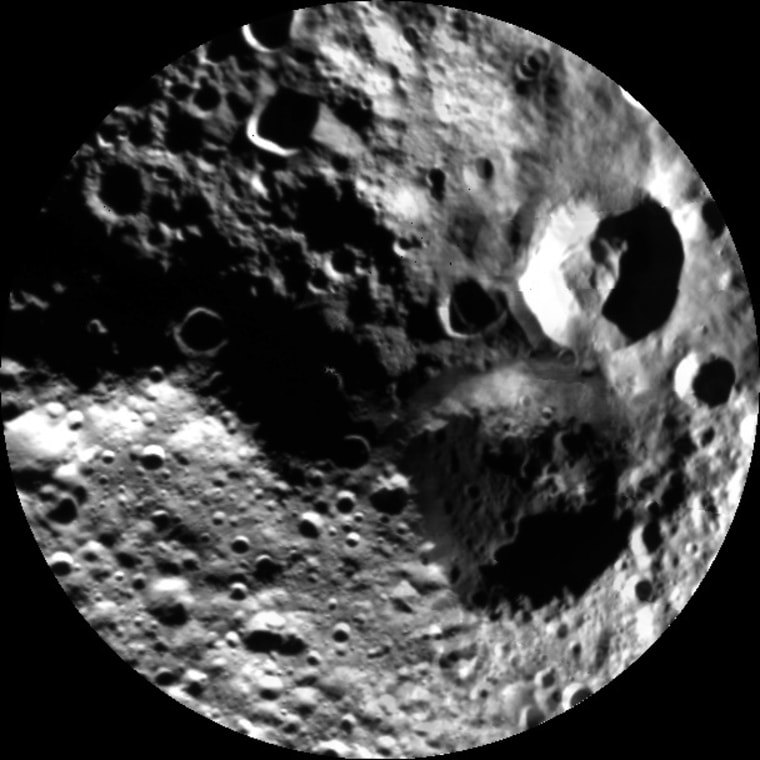
NASA's Dawn mission is saying Hasta la Vesta with a series of parting shots showing the asteroid Vesta, unveiled as the probe hightails it for the dwarf planet Ceres, the next stop on its eight-year, 3-billion-mile (5-billion-kilometer) itinerary.
The newly released pictures were taken as the Dawn probe wound down more than a year's worth of observations while in orbit around Vesta, an acorn-shaped world in the main asteroid belt. Dawn's $466 million mission was launched in 2007 and is aimed at studying the composition of Vesta as well as Ceres, two huge asteroids that are thought to preserve a record of the solar system's earliest days.
Dawn's data showed that Vesta has a chemically complex surface and an iron core. Based on its scars, the protoplanet appears to have suffered a mighty cosmic impact not just once, but twice in the past couple of billion years.
If it weren't for Jupiter's disruptive gravitational influence, Vesta might well have grown to become a major planet. "We can now say with certainty that Vesta resembles a small planet more closely than a typical asteroid," UCLA's Christopher Russell, the mission's principal investigator, said last month.
Dawn officially left Vesta's orbit during the night of Sept. 4-5, and its ion propulsion drive is gently pushing the probe toward a rendezvous with Ceres in 2015. Russell and his colleagues said today's images represent the last routine daily delivery from the mission during the three-year cruise, although other images may be highlighted as fresh findings are made.
"Dawn has peeled back the veil on some of the mysteries surrounding Vesta, but we're still working hard on more analysis," Russell said in today's news release. "So while Vesta is now out of sight, it will not be out of mind."


Researchers expect to see a markedly different world when Dawn gets to Ceres. Unlike 330-mile-wide (530-kilometer-wide) Vesta, 583-mile-wide (940-kilometer-wide) Ceres is so massive that its gravity has crushed the world into a basically spherical shape — which is why the International Astronomical Union classifies it as a dwarf planet. Ceres has a differentiated crust, icy mantle and core, and may have a higher water content than Earth.
"Almost everything we see at Ceres will be a surprise, and totally different from Vesta," Russell said last week.
Months after Dawn's arrival at Ceres, NASA's New Horizons probe will fly by my favorite dwarf planet, Pluto, and its brood of moons. How will Ceres and Pluto compare? Will we see polar frost caps on Ceres? Ice volcanoes on Pluto? Stay tuned for 2015, the year of the dwarf planets.
More about Vesta and the dwarfs:
- Vesta is a protoplanet, scientists say
- Flash interactive: The new solar system
- Take a tour of five dwarf planets
- Pluto debate is about more than just one little world
Alan Boyle is NBCNews.com's science editor. Connect with the Cosmic Log community by "liking" the log's Facebook page, following @b0yle on Twitter and adding the Cosmic Log page to your Google+ presence. To keep up with Cosmic Log as well as NBCNews.com's other stories about science and space, sign up for the Tech & Science newsletter, delivered to your email in-box every weekday. You can also check out "The Case for Pluto," my book about the controversial dwarf planet and the search for new worlds.